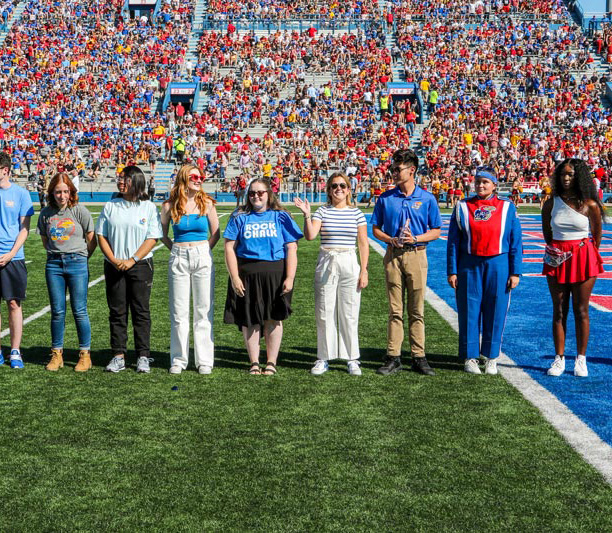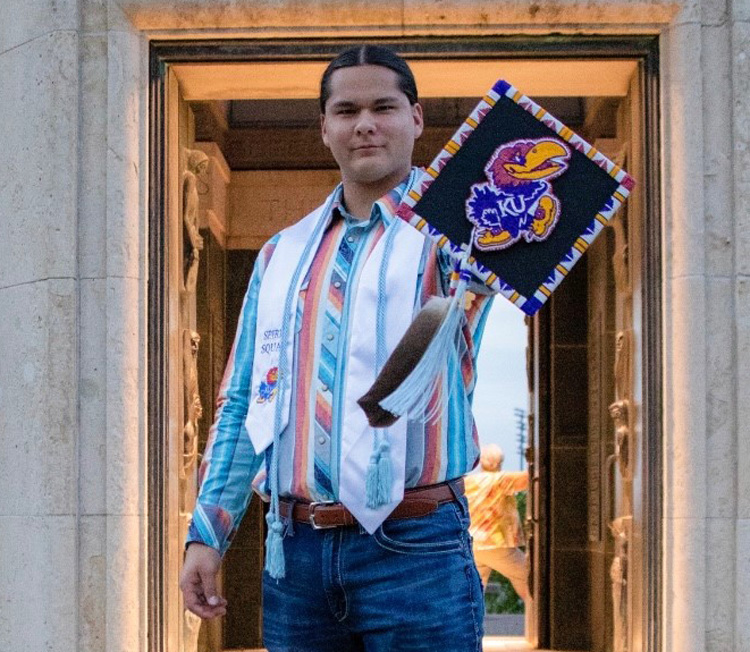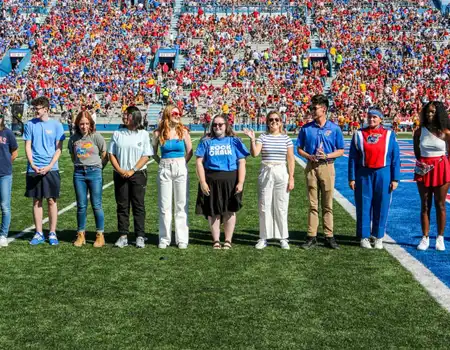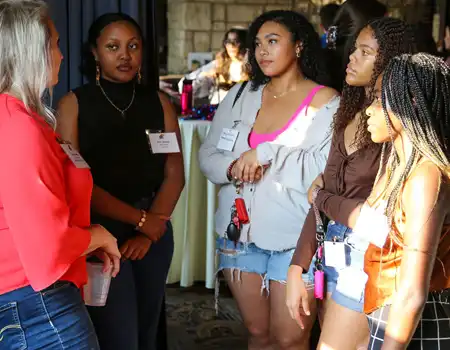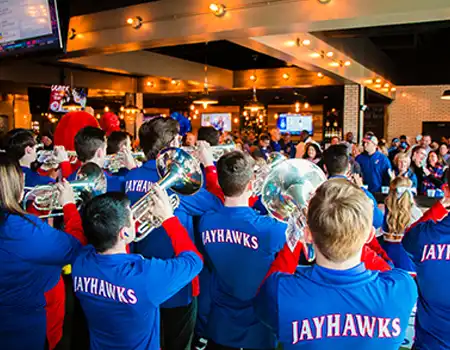Documentary features alumna’s reporting on Tulsa massacre
- June 24, 2021
- Alumni, Homepage News
DeNeen L. Brown, j’86, has worked at the Washington Post for over three decades and is an associate professor at the University of Maryland. Her reporting on the 1921 Tulsa Race Massacre is featured in two documentaries: “Tulsa: The Fire and the Forgotten,” and “Rise Again: Tulsa and Red Summer.” Brown shared with the University of Kansas the following:
When Black people talked about the 1921 Tulsa Race Massacre, it was mostly in whispers.
I was born in Oklahoma only 45 years after the Tulsa Race Massacre. My father, a descendant of a Creek freedman, is from Holdenville, Oklahoma. My paternal grandmother, “Mama Helen,” was born in the all-Black town of Boley. We know now that many Black people fled Tulsa during the massacre for surrounding Black towns.
I don’t remember when and where I first heard about it. It feels like the story was always with me. When I lived in Tulsa as a teenager, the place always struck me as haunted.
Many years later, after I’d gone off to college at the University of Kansas and after graduating on to Washington, where I became a reporter for The Washington Post, the story stayed with me in the recesses of my memory.

The events leading to the 1921 Tulsa Race Massacre began on May 30, 1921, when Dick Rowland, a 19-year-old shoe shiner, walked into the Drexel Building, which had the only toilet available to black people in a segregated Downtown Tulsa. Rowland stepped into an elevator. By the time the wire caged doors of the elevators opened, Sarah Page, a white elevator operator, unleashed a piercing shriek.
“The most common explanation is that Rowland stepped on Page’s foot as he entered the elevator, causing her to scream,” the Oklahoma Historical Society reported.
The Tulsa Tribune ran a headline the next day, May 31, 1921, “Nab Negro for Attacking Girl on an Elevator.” Hours later, a mob of hundreds of white people swarmed outside the Tulsa courthouse, where Rowland was taken after his arrest. The mob was confronted by Black men, including World War I veterans, who wanted to protect Rowland from being lynched, a tool of racial terror used frequently in the late 1800s and 1900s in America..
A struggle ensued between the white mob and the Black veterans. A shot was fired.
“Then all hell broke loose,” a survivor recalled later.
Hundreds of white people marched on Greenwood in a murderous rage.
“They tried to kill all the black folks they could see,” a survivor, George Monroe, recalled in the 1999 documentary “The Night Tulsa Burned.”
The white mob went on a two-day rampage, setting fire to hundreds of Black-owned businesses and homes in a district so prosperous it was dubbed “the Negro Wall Street” by philosopher Booker T. Washington.
Olivia Hooker, a massacre survivor, later called the massacre “The Catastrophe” to describe the 48 hours of fire and death leveled “Black Wall Street” in Tulsa. Hooker wasonly 6 at the time when she witnessed the mob that marched on Greenwood, burning houses and shooting people in the street. Her mother hid her and her siblings under a big oak dining-room table as their home was being ransacked.
“We could see what they were doing,” she told me during an interview. “They took everything they thought was valuable. They smashed everything they couldn’t take. My mother had [opera singer Enrico] Caruso records she loved. They smashed the Caruso records.”
White people killed as many as 300 Black people—dumping their bodies into the Arkansas River or burying them in mass graves, according to survivor accounts. The violence left more than 10,000 black people without homes and 35 city blocks of homes and businesses in Greenwood smoldering.
No white person was ever arrested in the Tulsa Massacre. Newspaper accounts of the rampage vanished. City officials, calling the massacre “an embarrassment” for a city calling itself “the Oil Capital of the World,” tried to cover up the massacre, one of the worst single incidents of racial violence committed against Black people in U.S. history.
For nearly 100 years, the massacre was left out of textbooks even in Oklahoma.
White people, many of whom had taken photos standing over dead bodies of Black people, went silent.
In April 2018, The Post sent me to Montgomery, Ala., to cover the opening of the memorial to lynching victims. It was there in Montgomery that I came face to face in a physical way with the horror of racial terror. The Peace and Justice Memorial stands on a grassy mound in Montgomery. From the entrance, visitors walk up a winding path to the memorial. There, each visitor is confronted by vertical tombs upon which the names of thousands of lynching victims are etched into metal.
I remember walking up the hill to the memorial. The names of those Black people who had been lynched hit me directly in the face. I will never forget that reporting trip. I will never forget walking amid the vertical columns, between them and around them and under them until they rose above my head. I recall frantically taking notes in my reporter’s notebook, scribbling down the stories that were on the surrounding walls. The stories explained why some people were lynched– Drinking from a white family’s well. A Black woman who scolded white children who threw rocks at her. A Black man, by accident, bumping into a white woman. Those stories were seared in my memory.
The memorial was profound and eerily beautiful.
After filing Lynching Memorial story for The Post, I flew from Montgomery, to Washington, D.C. Then on to Kansas City, Mo., then to Lawrence, where I attended a board of trustees meeting at the University of Kansas William Allen White School of Journalism, my alma mater. I hit the road again, driving South through the Flint Hills, to Wichita to visit my mother and siblings. Then hit the highway again, driving through tornado alley and across the Cimarron turnpike to Tulsa to visit my father and stepmother.
One afternoon, I asked my father to go with me to visit what remained of Black Wall Street. We were having a soul food lunch of fried catfish, greens and sweet potatoes, at Wanda J’s, a soul food café and one of the last Black-owned businesses on Black Wall Street. I remember looking around at the street, astonished that there was so much new development there.
Having just completed the reporting trip to Alabama, I wondered why Tulsa’s Black Wall Street did not have a similar monument. To me, Black Wall Street was sacred ground. None of the new development seemed related to the Black history of the place. I noticed a minor league baseball stadium had been built in the heart of the district, not far from a new apartment building and a yoga studio.
“Oh my God,” I thought. “Black Wall Street is being gentrified.”
Upon my return to Washington, I told my assignment editor at The Washington Post, Lynda Robinson, what I noticed and the Post sent me back to see what I could find as a reporter. On the ground in Tulsa, I talked to black descendants of the Tulsa Race Massacre. They told me that without truth and reconciliation, the wound of the massacre would never heal. They still wondered why the recommendations of the Tulsa Race Riot Commission of 1999 to search for mass graves had never been completed.
My story about the mass graves was published in The Washington Post in September 2018. Two days later, the city’s mayor, G.T. Bynum announced the city would re-open an investigation of mass graves with the potential of identifying the remains of victims.
Bynum told me he considered the massacre an unsolved murder case.
“We owe it to the community to know if there are mass graves in our city,” Bynum said. “We owe it to the victims and their family members. We will do everything we can to find out what happened in 1921.”
Meanwhile, state legislatures in Tennessee and Maryland have passed laws re-opening unresolved civil rights “cold cases.”
In 2019, I was contacted by a filmmaker in New York, who requested to follow me around with his cameras as I continued to report news developments in Tulsa.
That film, “The Fire and the Forgotten,” was released on May 31, 2021, the 100th anniversary of the massacre.
The film examines the Tulsa Massacres—in the context of other racial massacres that terrorized and destroyed Black communities in the 1800s and 1900s.
The camera follows me as I talked to descendants of massacre victims—and probe how their families’ historic experience affects their lives in today’s America. Through the historical lens of white violence and Black resistance, the film explores issues of generational trauma and calls for reparation by massacre survivors and their descendants.
I am listed as a filmmaker, reporter and producer of “Tulsa: The Fire and the Forgotten,” which PBS broadcast on May 31 and was featured in an IndieWire story.
I am also the focus of another production, “Rise Again: Tulsa and Red Summer,” which aired June 18 on NatGeo TV and is available to stream on Hulu. The Hollywood Reporter also previewed the documentary.
Brown has been an award-winning journalist for The Washington Post for more than 35 years. She also is an associate professor at the University of Maryland Philip Merrill College of Journalism.
